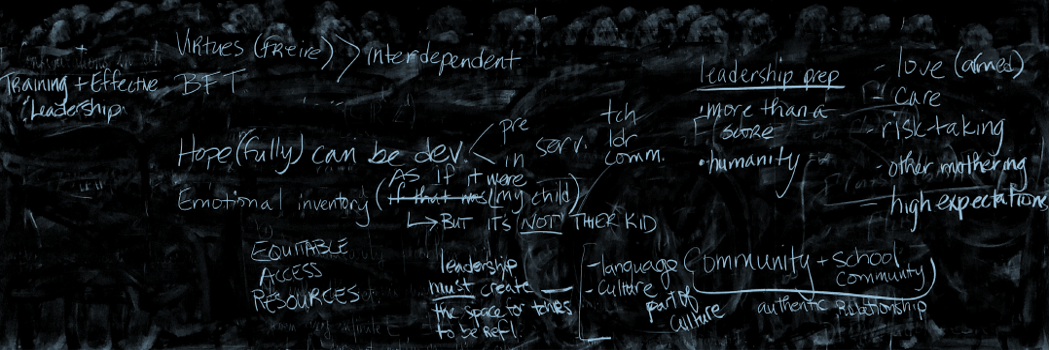There was a clear distinction made this week between “soft” and “hard” care that really spoke to me. Teachers who exhibit “soft care” are “Sympathetic … teachers who take pity on students’ social circumstances may have good intentions, but this may ultimately harm students as it lowers academic expectations” (Tichnor-Wagner & Allen, 2016, p. 410). On the other hand, hard care is seen as “…the combination of high expectations for academic performance that teachers place upon students (Katz, 1999) and [the] supportive, instrumental relationships between students and teachers” (Antrop-Gonzalez & De Jesus, p. 423). There is a fine line between soft and hard care and reading about the two concepts along with the examples of both displayed in schools further pushed my thinking. To embody hard care is to believe that our students are intellectually capable of rigorous learning. It is to believe they are capable, set high expectations, and then support them in reaching those expectations by building strong relationships grounded in trust. “Unless there is a fundamental belief that students are intellectually capable of meeting rigorous standards, other forms of caring will not work. Teachers may believe that lowering standards for students is caring when, in fact, they are inadvertently holding students back” (Rivera-McCutchen, p. 676). This quote demonstrates the necessity of mindset and belief in our students’ capabilities as a starting point for hard care. It also points to the challenge that I see in teachers adopting hard care in their classrooms, which is the confusion that lowering the bar and making the work less rigorous can feel or appear to look like care. I think that in order to embrace a firm belief in our students’ abilities, a critical examination of the role that race plays systemically in preventing some groups historically from accessing educational opportunities is imperative. “A critical care praxis begins by acknowledging that, to care for students of color in the United States, we must seek to understand the role that race/ ethnicity has played in shaping and defining the sociocultural and political conditions of their communities… To critically care for students, it is also imperative to interrogate and seek to alter the ways in which educational care is unequally distributed along racial/ethnic line” (Rolon-Dow, p. 104, 107). It is in this interrogation that we are able to acknowledge how systems of oppression have impacted our students and ourselves. It is through this interrogation, I believe, that we are able to check our own mindsets and when and if they are impacting the expectations that we are setting for our students.
School leaders play an integral role in cultivating a culture of critical care in our schools. By making “changes to the vision that they promote and the programs they introduce in order to support their school in (a) forging strong interpersonal relationships between students, faculty, and administration and (b) holding high expectations for student success in high school and beyond” (Tichnor-Wagner & Allen, 2016, p. 410), leaders are able to ensure that teachers are moving towards hard care and are adopting a mindset and pedagogy grounded in critical care. I am left wondering about how school leaders can model hard care with their staff and how important it is that they uphold and model high expectations for their teachers so that it can trickle down to students.




Hi Lindsay!
I was also really drawn to these ideas of hard and soft care. It is also interesting to see how you’re thinking about these concepts, now that I know you work with teachers. I’m curious to hear what you think about the use of hard and soft as descriptors. This reminded me of some of the questions that came up in class after watching, Lean on Me. I found the use of these terms questionable. That we need to ask ourselves why students of color need “hard” care and strategies to succeed? Why we continue to imagine soft as poor, weak, or lacking? I see soft as the direction we need to move in. Understood as being deep spaces for loving, learning, criticality, and transformation.
Some thoughts and questions after reading your entry.
Thanks!
Mariatere